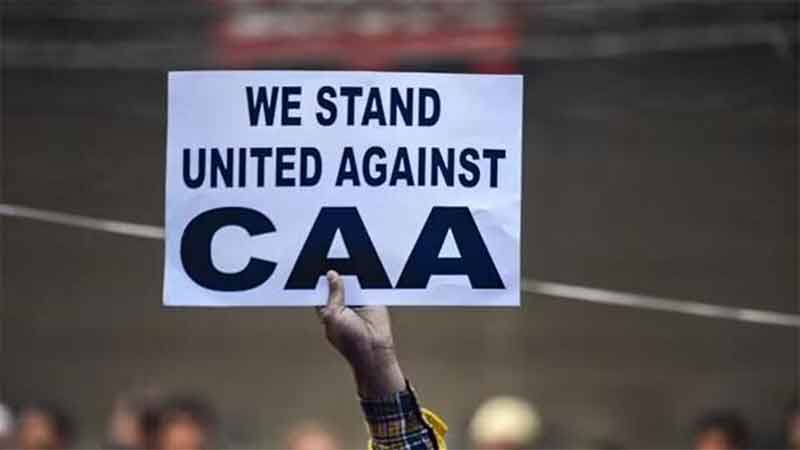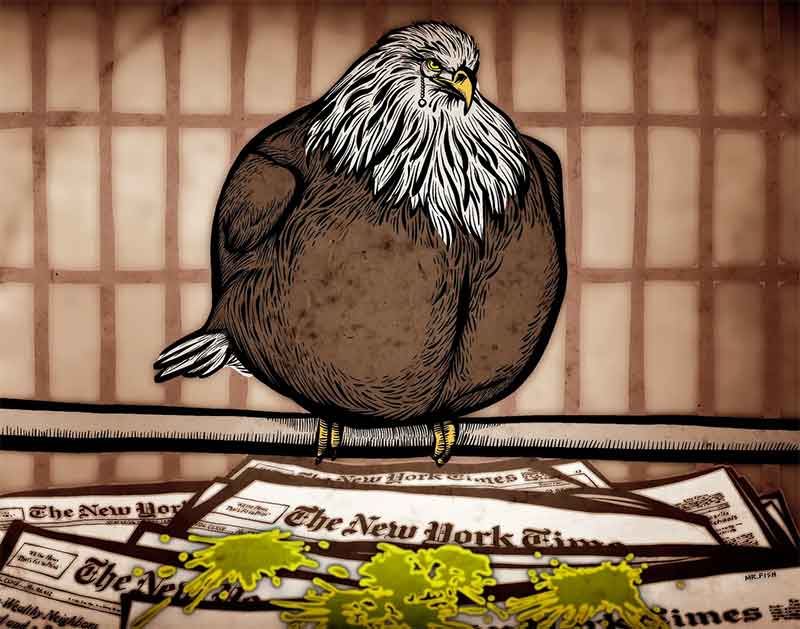
The novel coronavirus causing COVID-19 has already touched 212 countries and territories around the world and two international conveyances. According to the latest records on worldometer, India stands at 11th position with 96169 COVID-19 cases and 3029 recorded deaths is moving towards a much more difficult phase. Since 24 March, 2020 India is under a lockdown, however this phase has not let the caste system loosen its impact on Indian society.
In India the caste system was officially abolished in 1950 through the Constitution, but the 3500 year old system of social hierarchy – based on purity of blood by birth – still haunts in almost every aspect of life. Oppressed and marginalised groups have long endured social isolation, but it seems that some of the measures to stop rapid spread of the coronavirus has worsened this segregation. In 2013, the International Dalit Solidarity Network (IDSN), a network of international groups fighting for Dalit human rights, found in a study that any emergency makes Dalits, Adivasis and economically backward classes more vulnerable. The study shows that Dalits are frequently the worst affected. Further, they are often systematically excluded from relief and recovery efforts due to their inherent socio-economic vulnerability.
Disasters do not affect everyone equally. People who are socially vulnerable and exposed to natural and man-made hazards are hit hardest when any disaster strikes. Without proper attention the same structures and systems that make them vulnerable, while the discrimination would turn just normal and natural. The IDSN covered the Dalits experiences from several disasters in South Asia such as the 2001 Gujarat earthquake, the 2004 Asian Tsunami, and the floods in Nepal in 2008, the Indian states of Bihar, Andhra Pradesh, Karnataka and Assam during 2007-2009, and Pakistan in 2010. However during the coronavirus pandemic, everything good is equated with the so-called “higher beings” and the so-called “lesser humans” kitty is filled with whatever is evil.
Media’s creation of the coronasur myth
The current phase of COVID-19 lockdown has already exposed several instances of upholding the caste system and its practices. Earlier in March many Hindi media has equated the corona pandemic as coronasur – a newly coined terminology by combining corona and asur. This term was often referred in the negative sense with headlines such as coronasur ka vadh (killing the asura named corona), corona rakshas (the demon named corona) and during Holy festival the news headlines read coronasur dahan (burning of the asura named corona) and so on.
These channels purposely chose to bring in the name of Mahishasura. Mahishasura is termed as the buffalo-demon and every year across India Durga pooja is pompously celebrated with a lot of fervour recollecting his killing. Whatever the mythologies and their contexts be, there has always been a counter story to the same. Many indigenous communities – particularly Adivasis and Dalits and in some cases a few other backward communities – in different parts of India consider Mahishasura and Ravana as their ancestral Gods. There are many folktales, music, songs, paintings, musical dramas, etc. that are popular in many parts of India.
Former Chhattisgarh Member of Legislative Assembly and President of Chhattisgarh Mukti Morcha Janaklal Thakur notes, “we the Adivasi, Dalit, Moolnivasi people neither follow the rites and rituals of Hindu religion nor involve in any of them. We have our unique tradition and culture in which Ravan and Mahishasur are our ancestors. We therefore worship them. However, Hindu religious scriptures have described them as Rakshasa (demon) and for ages our ancestors have been insulted.”
As an anthropologist, I have been studying the culture of various indigenous communities for nearly two decades. Such stories are commonly placed as a contest between good and evil. It is in contrast with the Hindu mythological tales where both Mahishasur and Ravan are depicted as Rakshas, while in indigenous stories they are Rakshaks (saviours or fighters). One need not agree to the indigenous faith and belief system; however they do not hold the right to condemn or reject such myths either.
Social distancing versus physical distancing
The rapid spread of the virus needed people to keep certain distance from each other to prevent the pandemic into a mass fatality. From the very beginning Indian government sources as well as the media has popularised the term social distancing. The term “social distancing” was first used by the World Health Organisation (WHO) who later rectified it to “physical distancing”.
On 20 March, 2020 during the press briefing WHO said that keeping physical distance is “absolutely essential”. “You may have heard us use the phrase physical distancing instead of social distancing…. so that we can prevent the virus from transferring to one another. But it doesn’t mean that socially we have to disconnect.” Al Jazeera quotes sociologist Jeremy Freese of Standford University, as social distancing sounds like people should stop communicating with one another. “Instead we should be preserving as much community as we can while we keep our physical distance from one another.”
In a caste society like India the notion of social distancing provides the ground for the casteist precept of distancing one from each other based on birth. It can reinvent and legitimise an oppressive form of isolation and segregation as in a classical caste society. This in one way advocates caste based untouchability and taking pride in their upper caste status that they are not untouchables.
Dalit activist and Andhra Pradesh High Court lawyer Karthik Navayana says that words like “Social Distancing” to refer to “Physical Distancing” in India could lead to graded inequalities. He has gone ahead to file a letter petition – a form of Public Interest Litigation (PIL) – to the Chief Justice of Supreme Court of India in which he has cited the dangers of bringing back a tradition of practicing untouchability towards the Scheduled Castes and Scheduled Tribes. “This will lead to furthering the existing discriminatory caste based social practices,” tells Navayana.
The PIL seeks apex court to direct the Central Government, State governments, and Governments of Union Territories and also to issue guidelines to the print and electronic media to stop the usage of the word “social distancing” and to start using the other appropriate words as required in the local/ regional languages.
The application of the phrase social distancing by Government cannot be a reality to fight the pandemic COVID-19 virus, where there is more a need for social unity and upholding each other in the time of a global lockdown. However the government and the mainstream media chose to use this phrase which is a by-product of Hindu shastras, that has been used to practice untouchability in the form of abstaining social relations between the castes.
Praises of the caste culture?
On 14 April 2020, Jonnavithula Ramalingeswara Rao, a Telugu film lyricist and poet as well as a member of the Bharatiya Janata Party (BJP) in Andhra Pradesh, released a video through social media in which he recites a poem by him. Interestingly he is a Brahmin.
His poem contains unacceptable messages and direction to people in India to restore practice of untouchability and follow stringent and stipulated rules of dharmashastras much like Manu’s dharmashastras. In this poem Rao further appeals to the entire world community to follow untouchability-like distancing citing Indian caste system to be the model.
On 23 April 2020, Battula Ram Prasad filed an online FIR against Rao with Hyderabad police. Prasad, a Dalit activist, says that Rao’s poem had caused grave mental agony. “His poem aimed to develop hatred against people like us. His poem triggered furious debates in social media. I am getting several messages through social media,” said Prasad.
The FIR claims that Rao has written the poem to abstain from social relations with particular castes. It further alleges Rao of indicating that time has ripened to restore such discriminatory practices. The propounded theory of Dharmashastras and words used therein amounts to crime under SC, ST (POA) Act.
Rao’s poem made all efforts and attempts to justify untouchability and discriminatory caste practices when it says as in older times our ancestors used to keep distance from the untouchables, it is the same what corona teaches us today. It glorifies Brahmins and Brahminical system for keeping the untouchables away. Spread through social media, it indirectly insults the Constitution of India and anti-caste Dalit movement at large, apart from humiliation members of Scheduled Castes or Scheduled Tribes within public view.
Many social organisations and activists mention that the poem is written with malicious intention to incite hatred against Dalits and oppressed people in India. Ambu Nayak, President, Lambada (Adivasi) Hakkula Vedica says that Rao’s poem is absolutely absurd. The Brahmin glorifies the caste system. “It is aimed to promote enmity, ill will and hatred against Dalits and Adivasis,” says Nayak. Social distancing or abstaining social relationship is at par with the imposing of social boycott on Dalits and Adivasis.
Arrest of Dalit intellectual Anand Teltumbde
Anand Teltumbde surrendered before the National Investigation Agency (NIA) on 14 April 2020, the day the world celebrates the birth anniversary of Dr. B. R. Ambedkar – the father of modern democratic secular India. On 16 March 2020, a Supreme Court bench comprising the judges Arun Mishra and Mukeshkumar Rasikbhai Shah rejected the anticipatory bail pleas of the civil-rights activist Gautam Navlakha and writer Anand Teltumbde, in relation to the violence at Bhima Koregaon in January 2018. Navlakha and Teltumbde were booked by the Pune Police under the draconian Unlawful Activities (Prevention) Act [UAPA] for alleged Maoist links in 2018. The case has now been taken over by the NIA.
It was in August 2018 the Pune police first flashed the photos of Teltumbde during a press conference, where it claimed him to be “Comrade Anand”based on some flimsy letters recovered from the computer of those arrested in July 2018. This is what ended up with the impending arrest of Teltumbde on jayanti of his grandfather-in-law – Dr. Babasaheb Ambedkar.
Teltumbede had earlier said that the so-called recovered letter was clumsily constructed with the information of an academic conference that he attended in American University of Paris. The details of the meeting is available on the university website. While the matter has been at a peak, the Ambedkar family issued a statement to clarify that they stand in support of Teltumbde against the fabricated case. However, the arrest turned out to be the reality of the day.
It is ironic that an intellectual and writer of global stature having ties with the Ambedkar family was arrested on the day of Ambedkar Jayanti. This year people across the world across celebrated 100 years of Ambedkar’s critical journalism and writings against social hierarchies, cultural domination and slavery of all forms. Teltumbde is the tallest among the few, who understand the radical and revolutionary in Ambedkar, rather than the cowed-down appropriated personhood of Babasaheb as placed by Indian state and India’s social order. His biggest crime is the way he analyses Indian society, where he has placed the historical caste along in a critical nuptial knot of the oppressed class.
In the phase of COVID-19 pandemic, the Supreme Court on 23 March 2020 issued guidelines to all the state governments including the Government of India to decrease jail inmates. Accordingly, a high power committee should be formed with the objective of reducing the number of jail inmates and other places such as detention centres, correctional homes, etc. According to the Prison Statistics India-2018 of the National Crime Record Bureau (NCRB), overall the occupancy rate has increased from 113.7 percent in 2016 to 117.6 percent in 2018, of which 69.4 percent are undertrials, 29.9 percent are convicts, 0.5 percent detenues and 0.1 percent of other prisoners. Jails are recognised to be amongst the most fertile breeding grounds for infectious diseases and the risk to life is obvious for those more vulnerable.
It is in this context that Supreme Court’s directives at one end, while on the other Teltumbde was forced to surrender. His bail application before the NIA court at Mumbai cited the ongoing Covid-19 pandemic, the high risk in jails and his continuing respiratory ailment. It was rejected. For Teltumbde it is yet another rejection in the series of many.
Many civil rights bodies have raised the question on such an approach. Bodies like People’s Union for Civil Liberties (PUCL) and People’s Union for Democratic Rights (PUDR) have repeatedly raised the issue of the health risk that Covid 19 poses to jail inmates and has sent representations to the government and its High Powered Committees. “The investigation agency has expressed no desire for further custody for interrogation. Thus no purpose is being served by keeping them in custody at present,” a PUDR statement said.
Family sources expressed their apprehension of the risk that Teltumbde faces, The Wire reports that an officer of the NIA investigation team had tested positive for COVID-19. His life is certainly at risk inside the Arthur Road jail.
India’s response to contain with coronavirus and the subsequent COVID-19 lockdown has been much under the scanner, which has not been brought to the light by mainstream media. Rather than address the question of social inequity among Dalits, Adivasis, backward classes and working masses, this lockdown has been applied as yet another opportunity and means to consolidate the caste fabric of Indian social set-up.
Indian state, even under a pandemic like coronavirus, is not governed based on her Constitution, rather the societal structures shaped by oppressive structural forces of casteism, classism, communalism, identity, elitism, and patriarchy. This undoubtedly renders the oppressed section vulnerable during the pandemic due to poverty, lack of information, paucity in education, access to resources and a set welfare programmes and schemes full of corruption.
It took centuries of struggle by Dalit-Bahujan leaders – particularly in recent centuries like Jyotirao Phule, Iyothee Thass, BR Ambedkar, Baba Mangu Ram, Periyar, Aiyyankali, Narayana Guru, and others – to unveil casteism and expose the anti-human religious structure. In this context, we must realise that patterns that shape during difficult phases of history becomes the culture of the society that leaves its imprint in power rule and governance. What bothers today is how blatantly the state looks for opportunities to snatch away the constitutional rights and civil liberties of her citizens, particularly those hailing for oppressed sections of society.
Goldy M George is a Dalit rights activists and currently works as Consulting Editor with Forward Press, New Delhi
SIGN UP FOR COUNTERCURRENTS DAILY NEWS LETTER









































